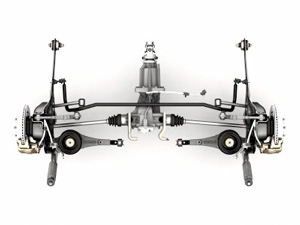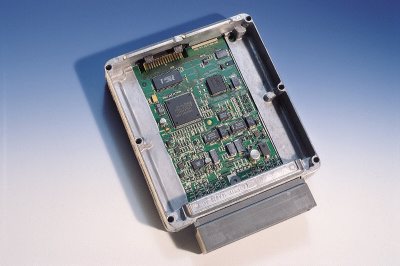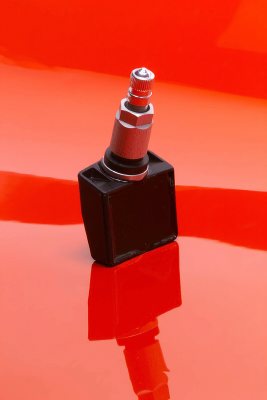 The first seven years of the previous decade were fueled by an immense appetite for buying new cars and homes purchased with easy credit that is not longer there. Unlike homes that can sit unoccupied, vehicles typically stay occupied and on the roads.
The first seven years of the previous decade were fueled by an immense appetite for buying new cars and homes purchased with easy credit that is not longer there. Unlike homes that can sit unoccupied, vehicles typically stay occupied and on the roads.
The last three years have been a struggle for consumers. They have had to make cutbacks in their lifestyles and transportation. Shops have felt this contraction in the economy.
Even with these negative indicators, vehicle technology has not slowed or stopped. OEMs have not stopped introducing new systems and features that make cars safer, more convenient and more efficient.
No two ways about it, cars are better made and breakdown less often. But when they do break, chances are the labor and diagnostic charges to bring the vehicle back to life is equal to, or more than, previous vehicle services like tune-ups, fluid flushes or lubes.
 The worst thing shops can do is to become Luddites and try to perform only the “gravy jobs.” They usually curse the OEMs for making vehicle too complex while sending their trusted customer to the competition to repair an item they are not willing to purchase training and tools to do themselves. They are throwing the steak out with the gravy.
The worst thing shops can do is to become Luddites and try to perform only the “gravy jobs.” They usually curse the OEMs for making vehicle too complex while sending their trusted customer to the competition to repair an item they are not willing to purchase training and tools to do themselves. They are throwing the steak out with the gravy.
The first wave of post-9/11 zero percent financing vehicles have hit the bays, and shops should prepare for the next two waves of 2004-2006 and 2007-2011 vehicles. Let’s look at some of the opportunities.
2001-2003
Most of the 18 million vehicles sold during the post 9/11 zero percent financing boom have entered into a “sweet spot” for shops. This is where the “gravy jobs” like chassis, exhaust and brake repairs start to become more frequent.
But, these vehicles are still in decent shape and drivers want to keep them. Most of these vehicles have crossed the 100,000 mile threshold. At this point, all warranties have long since expired. One of the top repairs for these vehicles has become the replacement of catalytic converters and oxygen sensors.
1999-2003 models represent some of the most stringent calibration for converter efficiency due to the transitional National Low Emission Vehicle (NLEV) standards. The catalyst monitors on these vehicles are sensitive and it takes extra care and diagnostic time to repair the system to turn off a P0420 code and keep it off.
Shops that just swap converters and oxygen sensors to solve the problem will be opening themselves to comebacks and unhappy customers. Shops that can perform a proper diagnosis will be the ones who survive.
 While a lot of the vehicles sold during this period were SUVs with solid rear axles, some of the smaller cars and cross-over SUVs received multiple-link rear suspensions. Many of these designs traded ideal geometry for less intrusion into the trunk or passenger compartment. As the suspensions squat under acceleration, the camber can change significantly.
While a lot of the vehicles sold during this period were SUVs with solid rear axles, some of the smaller cars and cross-over SUVs received multiple-link rear suspensions. Many of these designs traded ideal geometry for less intrusion into the trunk or passenger compartment. As the suspensions squat under acceleration, the camber can change significantly.
Most of these vehicles have no camber or caster adjustments built into the platform. These “net build” vehicles will require a little extra parts and labor to bring into specifications.
With more than 100,000 miles, some of these suspensions are starting to sag and it is causing abnormal tire wear due to the geometry. Also, many of these suspensions have bushings degraded to the point where all it takes is a little effort to see some play. Shops that can source the right part, perform the repair and align a vehicle will keep their customers happy.
Almost all of these vehicles are in need shocks and struts. Most of the worn out units are not leaking, but the fluids and valves inside have degraded to the point of making the vehicle unsafe.
2004-2006
 The vehicles made in the middle of the decade are now in the 50,000 to 70,000 mile range. These vehicles represent a challenge to work on for some shops, but they are a significant opportunity in terms of diagnostic fees.
The vehicles made in the middle of the decade are now in the 50,000 to 70,000 mile range. These vehicles represent a challenge to work on for some shops, but they are a significant opportunity in terms of diagnostic fees.
These vehicles represent the marriage of electronic and mechanical systems on common communications networks.
No longer are systems working on their own. A vehicle may have HID headlights controlled by a lighting computer requiring an input from a sensor measuring vehicle height connected to the body control module using the same sensor to adjust the air suspension.
When working, the systems are less complex and more efficient. If there is a bad ground, damaged module or mis-calibrated component the systems can come crashing down.
Servicing these vehicles requires a considerable investment in scan tools and training. Swapping parts and pulling the negative battery cable will not fix problems. Parts like EGR valves, steering position sensors and even brake pedal switches require calibration with a scan tool on most of these vehicles.
Servicing these vehicles requires being able to re-flash (or sublet the procedure) the control modules. It is a critical step in completing a repair and keeping the check engine light out.
2007-2011
 Did you know 100% of new vehicles built in this country since September 2007 come equipped with a tire pressure monitoring system (TPMS)? Add to that a giant gaggle of older cars with indirect or direct TPMS systems, and you’ve got a service component that is definitely here to stay.
Did you know 100% of new vehicles built in this country since September 2007 come equipped with a tire pressure monitoring system (TPMS)? Add to that a giant gaggle of older cars with indirect or direct TPMS systems, and you’ve got a service component that is definitely here to stay.
Your shop needs to be able to service these systems even if you do not sell a large volume of tires. Could you imagine having to send your best customers to your competition or even the dealer for a tire rotation or sensor replacement? This is a fast way to go out of business.
In general, a good TPMS tool should have the following features: the ability to audit the vehicle before the wheel is broken down; the ability to know all of the different low frequency wake-up patterns to transmit and activate the sensors on each type of make/model/year combination; and the ability to establish whether each sensor is working or not.
The good news is that major OEMs have standardized relearn and reprogramming procedures across the majority of their models.
Telematics will also be another opportunity for shops. The technology that enables real-time communication and data exchange with a vehicle in motion has tremendous applications to benefit the driver and shops. Through wireless data connections, shops will have the ability to develop a relationship with the vehicle and driver that could mean helping unlock a door or diagnosing a problem anywhere and anytime. It could be through the stock system or through an aftermarket unit the stays plugged in to the OBD connector. 2007-2011 vehicles have the greatest potential benefits for these systems because so much access can be gained through the OBD connection.
Good Times Ahead
We are entering into a new era for technicians. New vehicles do require the same logic, intuition and knowledge critical for working on older vehicles, but they also require patience and reading comprehension to fully understand the service information.
Services like TPMS relearn procedures and flash reprogramming require strict adherence to the procedures that no amount of experience or age can replace.
Shops must not be bashful about charging diagnostic fees and the appropriate labor for a repair. Do not work for free, or even time spent research the diagnosis should be on the customer’s invoice. Remember, diagnostic fees and tiered labor rates help to pay for tools and training. Not charging a customer or making a guess can be even more expensive for your customer and shop’s productivity.
As the economy improves, it may get worse for shops that are not prepared to handle the changing vehicles that are entering their bays. They might be able to survive on oil changes, tires and brake jobs for a while. But, the first TPMS system, electronic parking brake or oil life indicator they goof up will be a sign they should close up shop.
For shops that made the investment in tools and training, the next few years are going to be some of the best ever.












